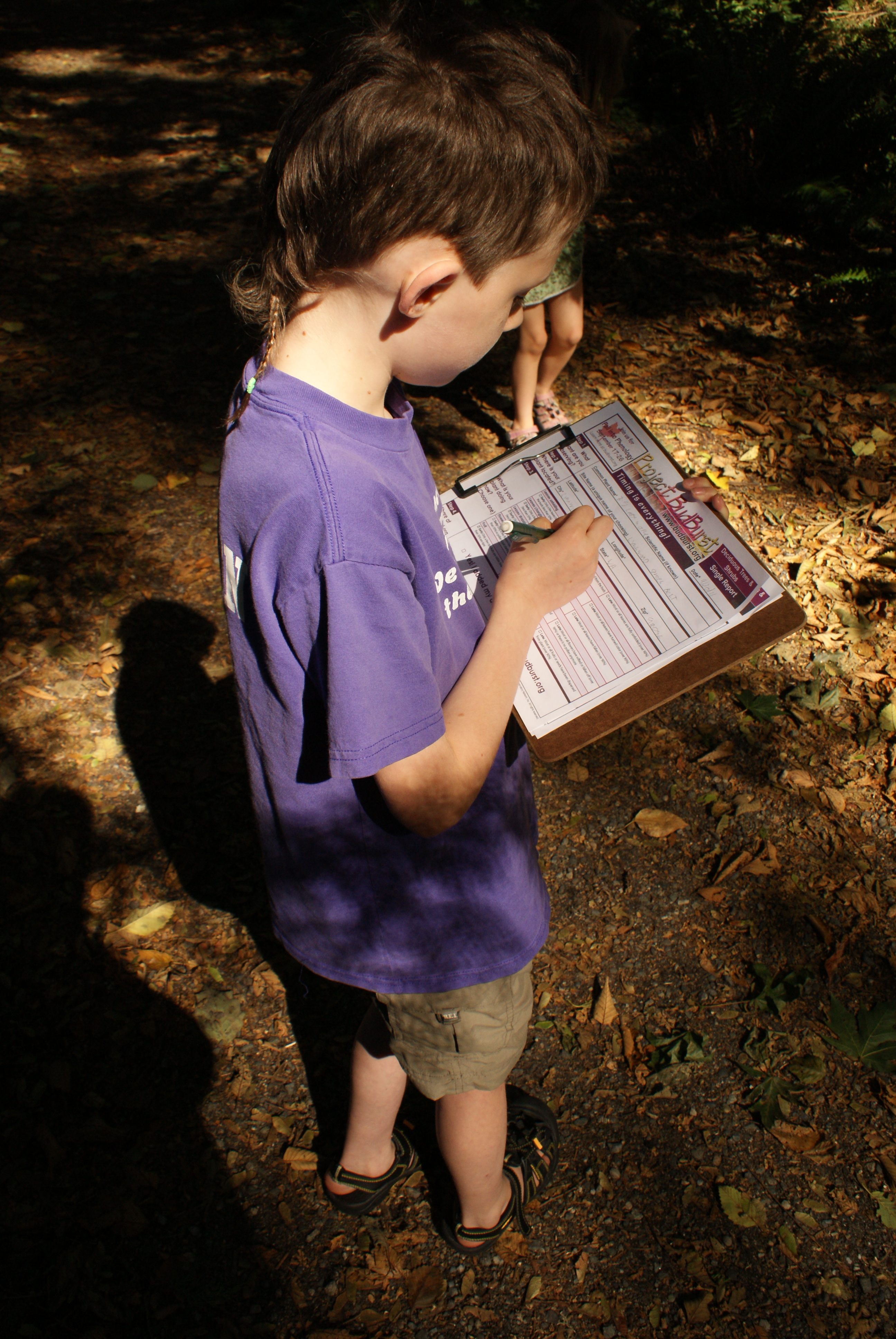[This is the second in a multiple-part series about Citizen Science projects that children can be involved in. Read the first part, about bird projects kids can participate in, here. The third part, describing Zooniverse, is here.]
Last time I put together a list of all kinds of bird research projects you and your family can be involved in. Today I’ll bring you some plant and animal projects that are looking for the general public to help.

I’ve already mentioned Project Bud Burst in my post about autumn activities. This nation-wide research project is looking for data about when plants bud, bloom, set seed, lose their leaves, and set fruit. You can report on trees, shrubs, and flowers, within your backyard or on your nature outings. This program is trying to understand plant stages over time and space, to see if there are any changes in the environment over time. My family has done this before as part of our school work, and we found it easy and fun to do.
It might be a little late for it this year, but if you like garden flowers or bees you should consider participating in the Great Sunflower Project. Participants in this program plant sunflowers or other specific bee-friendly garden plants, and then count the numbers of bees and other pollinators that visit them. The purpose of this project is to get a better amount of data around the country to follow the trends in numbers of honeybees. Honeybees have had a hard time over the past several years, and this is one thing the general public can do to help them out.

If bees make you nervous, you might be more interested in the Lost Ladybug Project. Kids and adults can go out and look for ladybugs, take a photo of them, and submit them for identification. This program is important and relevant because many species of native ladybugs are declining, while exotic species are increasing in number. Scientists are trying to understand why, and are trying to find colonies of rare and declining natives. The Lost Ladybug Project has a section with plenty of extra learning and background information for kids, as well.
For the serious citizen scientist who is ready for a more involved commitment, I came across a project that combines plants and animals in a more robust fashion. The USA National Phenology Network tracks changes in the development of plants and animals over the seasons in a program called Nature’s Notebook. Participants choose an area to observe over time, then choose the species they are interested in following. Information they gather can be entered online and is used by scientists, civic managers, and other data analysts for many different reasons. They have a large listing of educational materials available, covering ages from children to adults. We haven’t done this program ourselves, but it looks like an intriguing choice for people who are interested in a more serious scientific pursuit.

Another website geared toward children and education is the Journey North. This free internet program funded by the Annenberg Foundation describes itself as “an online program that explores the interrelated aspects of seasonal change.” Kids can choose from several different projects, including planting tulips to track when they bloom around the world, following the monarch butterfly migration, whooping crane populations, American robin migration, and even comparing the amount of sunlight present in different areas of the country over the seasons. The website provides a copious amount of background and educational materials to go along with each topic. Educational articles, slideshows, teacher guides, and brochures are all provided to help in your learning. I haven’t used this program yet, but look forward to exploring some of the resources for our homeschooling curricula.

If you have budding herpetologists in your family, you can enter reptiles or amphibians you find on your outings on Global Amphibian BioBlitz or Global Reptile BioBlitz. Enter your observations, including dates and locations, and share these sightings with folks who are tracking the presence and health of these sensitive creatures. This is a part of the iNaturalist website, where anyone can record naturalistic observations and share them with scientists and the world.
Phew! This is growing into a long list! I hope you’ll be able to find something for your family to get involved with, even if it’s just for one or two observations. Participating in these projects can be enlightening for children and provide a good impetus for getting outside into nature. Let me know if you get involved in any of these programs. I’d love to hear your stories!

Leave a Reply